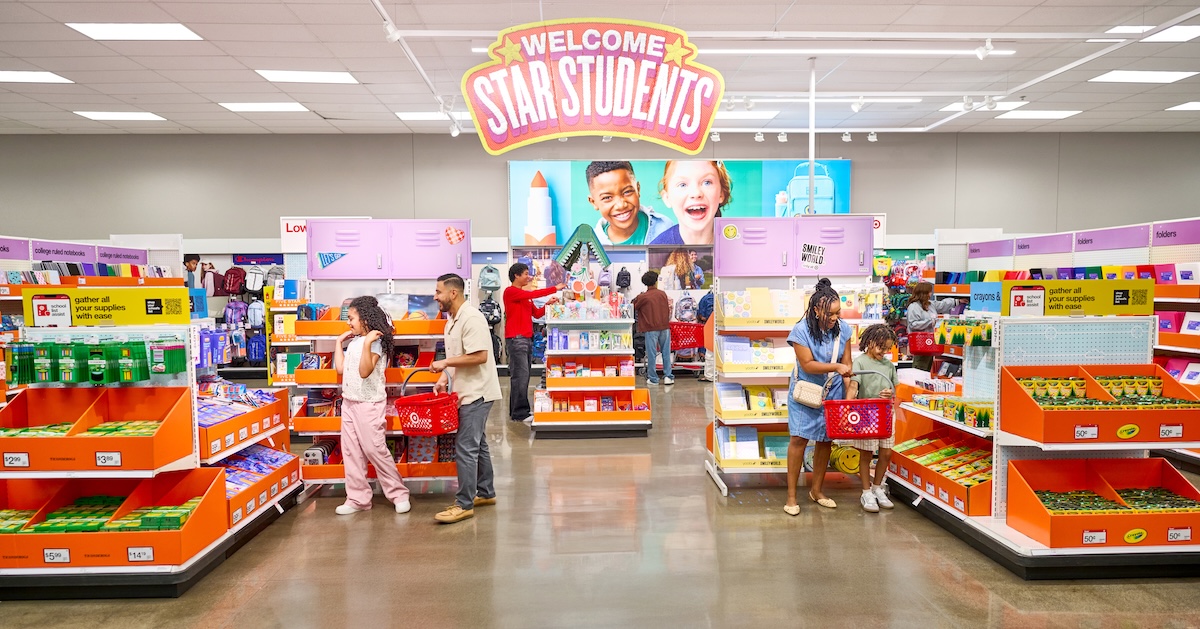How tariffs have upended the back-to-school season

This year, one of the most important annual shopping events hangs in the balance of how shoppers respond to the threat of tariffs with their wallets, with President Trump’s deadline for trade deals set for Aug. 1.
Shoppers are spreading out their back-to-school shopping over the course of the summer and are more concerned about finding the best deal than they were a year ago, according to recent consumer surveys. Retailers have had to change how they market and plan back-to-school events — highlighting when they are keeping prices the same. They have also especially put emphasis on sales events in mid-July as consumers signal they’re willing to shop earlier to get the best deals.
“Consumers, overall, are very cost-conscious at the moment,” said Stephanie Cegielski, vp of research for shopping center industry group ICSC. “We’re still seeing them spend, we still see year-over-year growth in retail sales, but they’re cautious about where they’re spending, they’re going to the discount stores, and they’re just being a little bit more mindful about what they’re spending on.”
In one survey from ICSC conducted July 7-9, 55% of respondents said they had already completed their back-to-school shopping, a seven percentage-point increase from a year ago. Forty-six percent of respondents said they plan their shopping around specific promotional events like Target Circle Week, Amazon Prime Day, Walmart Deals or Labor Day sales, with nine in 10 respondents saying promotions generally influence their purchases during the back-to-school season.
“I think they’re planning their budgets around [these sales events],” Cegielski said. “Ten, 20 years ago, it was this event that you went to a couple of weeks before [school starts], you got all your school supplies, and you were done. Consumers now are really looking for the best deals that they can find.”
Ninety-one percent of back-to-school shoppers said higher prices would impact their purchasing behaviors this season, driving them to buy items on sale, buy from cheaper brands, compare prices across retailers or reuse supplies they already have, per the ICSC survey.
A separate survey from Deloitte conducted in May projected that shoppers would spend $570 per child, on average, during the back-to-school season.
“It just shows you how savvy these consumers have gotten about looking for deals — and they have this budget in their head that they’re not really moving off of,” said Lupine Skelly, retail research leader for Deloitte, adding that the average budget is down for the fifth year in a row.
Deloitte also found an increase in August spending and that less back-to-school spending was planned to be done by the end of July — 61% this year versus 66% last year. About half of parents said they were anxious about the potential for higher prices on back-to-school items, and half also said they planned to cut back in other areas to budget for back-to-school.
As customers embraced earlier shopping this year, retailers leaned into events coinciding with Amazon Prime Day in July. As Amazon extended Prime Day this year, and retailers hosting competing events followed suit. Walmart’s deals event ran more than a day longer than it did last year. Best Buy extended its summer sales event from three to seven days from 2024 to 2025.
“Retailers are pretty aware of this value-seeking consumer,” Skelly said. “They’ve trained the consumer to jump early and get into those types of promotional events.”
Meanwhile, ICSC’s Cegielski said she has heard from retailers that they are trying to keep prices low on key items by raising the price on other items to shift the higher costs from tariffs. For example, Cegielski said a retailer may have a T-shirt selling well at $5 and raise the price of something else to keep that successful price intact.
“They’re really trying to … not have to pass those costs along to the consumer on those essential items,” Cegielski said. “Will that hold true everywhere? Unfortunately not. But for things like this, I think retailers are really trying to provide the best prices to consumers where they can.”

